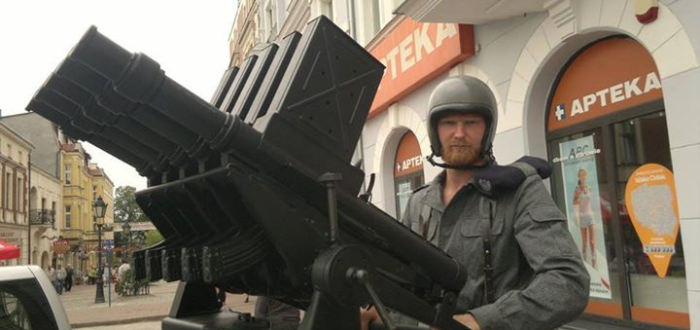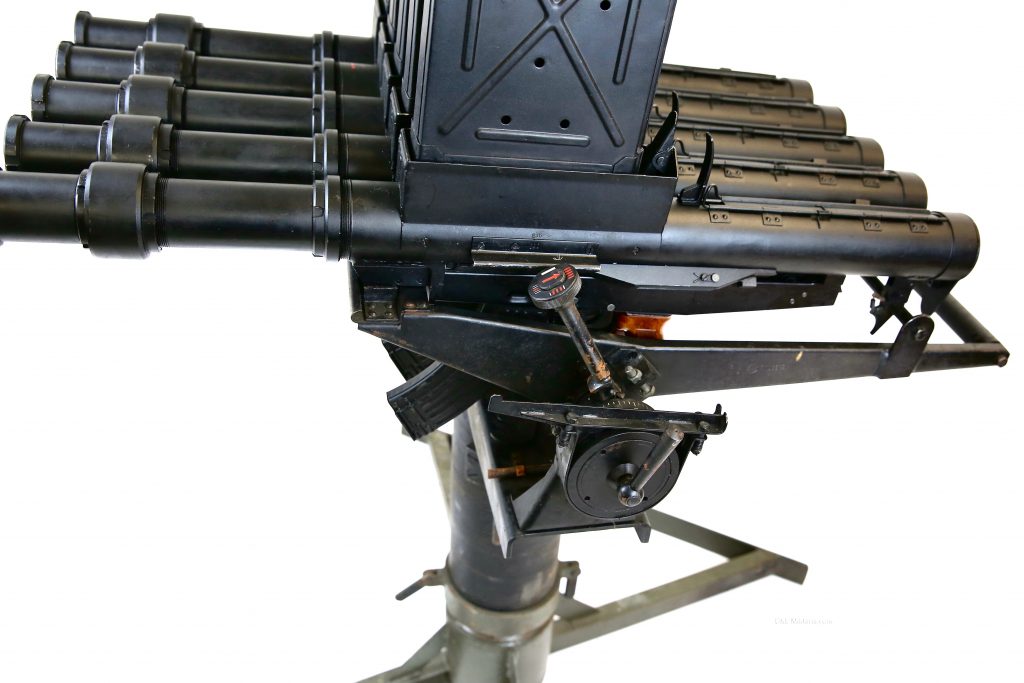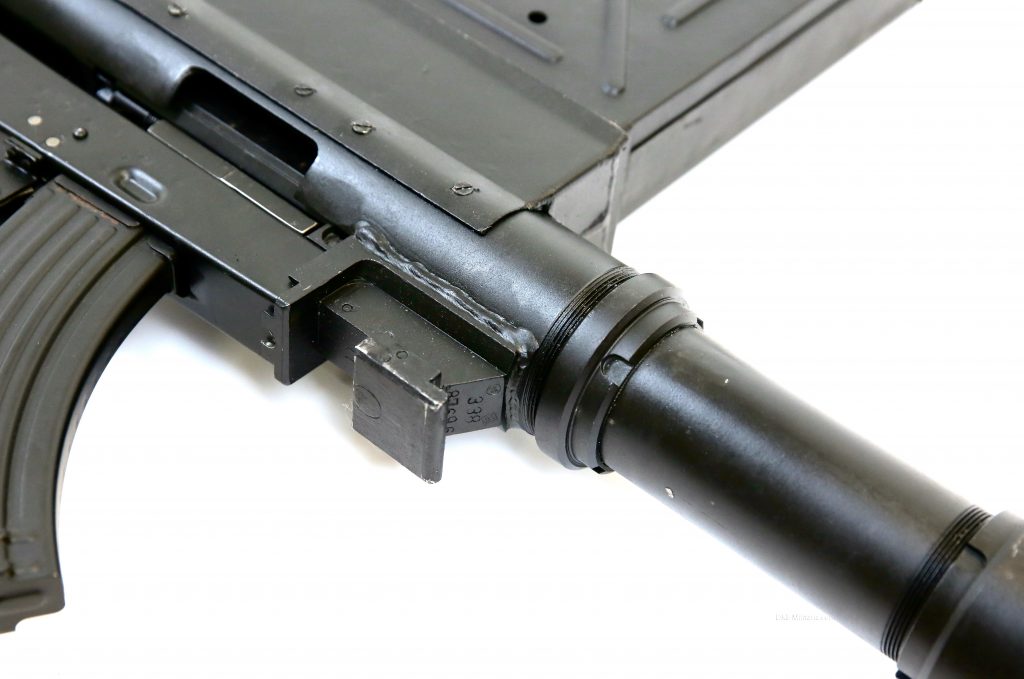Jip Foxall McTavish with Jack Shanley
The unusual Polish AWGŁ-3 less-lethal launcher system, shown in Figure 1.1 in its single-launcher configuration, can be operated as a stand-alone weapon or as part of a crew-served system. This riot control system was developed in the 1970s by the Ośrodek Badawczo-Rozwojowy (OBR; ‘Research and Development Centre’), alongside the RWGŁ-3 (shown in Figure 1.2). The AWGŁ-3 entered service with the police and paramilitary units of communist Poland in 1982, and remains in the armouries of the modern Polish federal police, as well as law enforcement units in Austria, Croatia, and Hungary.

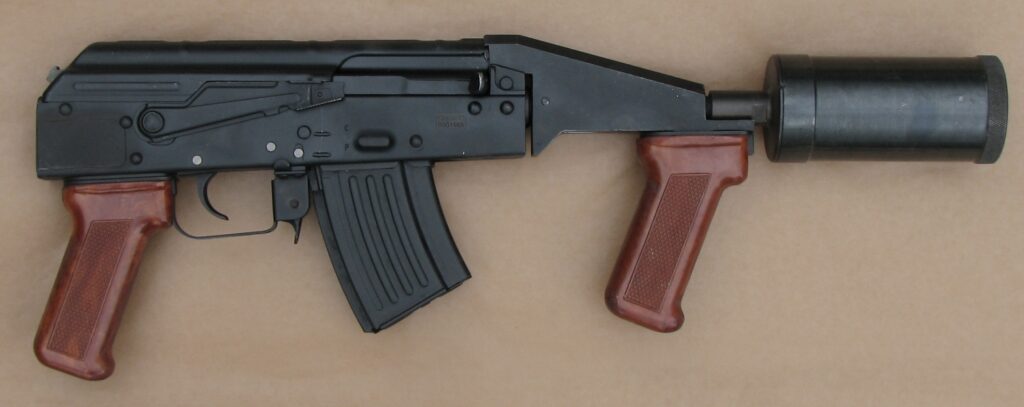
The AWGŁ-3 is a less-lethal launcher based on the receiver of a Polish AKM. Although the weapon features a standard AK-type pistol grip, magazine, and trigger assembly, the top half of the weapon is of a new design. The weapon uses a simple blowback action for its operation. The weapon features two magazines: one standard AK-type magazine containing blank cartridges (so-called ‘grenade blanks’) and one top-loaded, five-round magazine that containing 52 mm riot control agent (RCA) munitions. In its crew-served configuration (see Figure 1.3), five launchers are mounted in a single housing, for operation from a vehicle or fixed position. One, three, or five of the assembled launchers can be fired from a single central trigger, using a safety/selector knob to engage the desired number of weapons or place the system on safe (see the gallery). The technical characteristics of the weapon are presented below.

The AWGŁ-3 uses the UNM wz. 43/60 grenade blank to propel simple, cardboard-bodied 51 mm Uniwersalny granat łzawiący (UGŁ; ‘universal lachrymatory grenade’) RCA munitions out to 180 metres. The UGŁ-200 and UGŁ-200/1 (see Figure 1.4) are the two most common munitions used with the AWGŁ-3. These generate a CN (sometimes known by the trademark ‘Mace’) irritant/lachrymatory smoke that will cover approximately 25–30 m around the point of impact, with effects extending up to 120 m away. The UGŁ-200/1 munition also incorporates a loud acoustic effect. Other munitions, including smoke grenades, may also be fired from the AWGŁ-3. When fired, the munitions are ignited by the heat of the propelling cartridge, but they may also be ignited by hand and thrown. The munitions are marked in the typical Warsaw Pact style: designation, factory code, batch number, year of production. The munitions are all produced by Nitro-Chem in Bydgoszcz.
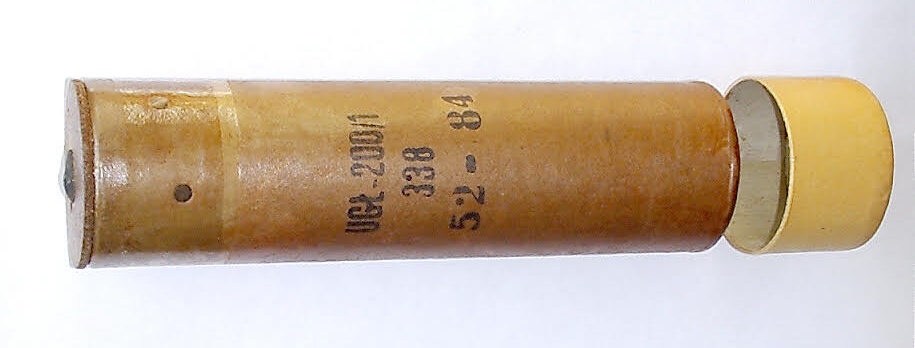
The AWGŁ-3 is intended to be mounted to a vehicle and fired when stationary. Nonetheless, the individual launchers can be detached from the mounting system as used as individual weapons as required. When in the single-launcher configuration, a Polish Police source indicates that a launcher can be operated while standing, kneeling, or sitting, provided that it is rested against a firm surface, such as a wall. When fired from a moving vehicle, the barrels must maintain an elevation of no less than 30 degrees. The AWGŁ-3 is intended to control “groups of people who behave aggressively and larger groups… violating the legal order”.
Technical Characteristics
Barrel diameter: Muzzle: 51.4 mm; breech: 51.8 mm
Maximum range: 180 m
Minimum range: 60 m
Theoretical rate of fire: 375 rounds per minute (using 5 barrels)
Practical rate of fire: 50–75 rounds per minute (using 5 barrels)
Total weight of system: 177.8 kg (unloaded)
Total weight per launcher: 17.7 kg (unloaded)
Blank cartridge capacity: 30 rounds (per launcher)
RCA projectile capacity: 5 rounds (per launcher)

Sources
Kozłowski, Zdzisław. 2008. Chemiczne Środki Obezwładniające [‘Chemical Incapacitating Agents’]. Piła: Szkoła policji w Pile, Wydział Dowodzenia.
Ministerstwo Spraw Wewnętrznych. 1988. Automatyczna Wyrzutnia Granatów Łzawiących AWGŁ-3 [‘Automatic Lachrymatory Grenade Launcher AWGŁ-3’]. Warsaw: Ministry of the Interior.
Nitro-Chem. 2010. ‘UNIWERSALNY GRANAT ŁZAWIĄCY UGŁ – 200/1’. Available via: <https://web.archive.org/web/20170108192946/http://nitrochem.com.pl/oferta/amunicja/granaty-chemiczne/uniwersalny-granat-lzawiacy-ugl-200-1>.
Stefański, Robert. 2011. Środki Przymusu Bezpośredniego: Wybrane Zagadnienia [‘Direct Coercive Measures: Selected Issues’]. Słupsk: Biblioteka Policjanta Prewencji.
Remember, all arms and munitions are dangerous. Treat all firearms as if they are loaded, and all munitions as if they are live, until you have personally confirmed otherwise. If you do not have specialist knowledge, never assume that arms or munitions are safe to handle until they have been inspected by a subject matter specialist. You should not approach, handle, move, operate, or modify arms and munitions unless explicitly trained to do so. If you encounter any unexploded ordnance (UXO) or explosive remnants of war (ERW), always remember the ‘ARMS’ acronym:
AVOID the area
RECORD all relevant information
MARK the area from a safe distance to warn others
SEEK assistance from the relevant authorities

